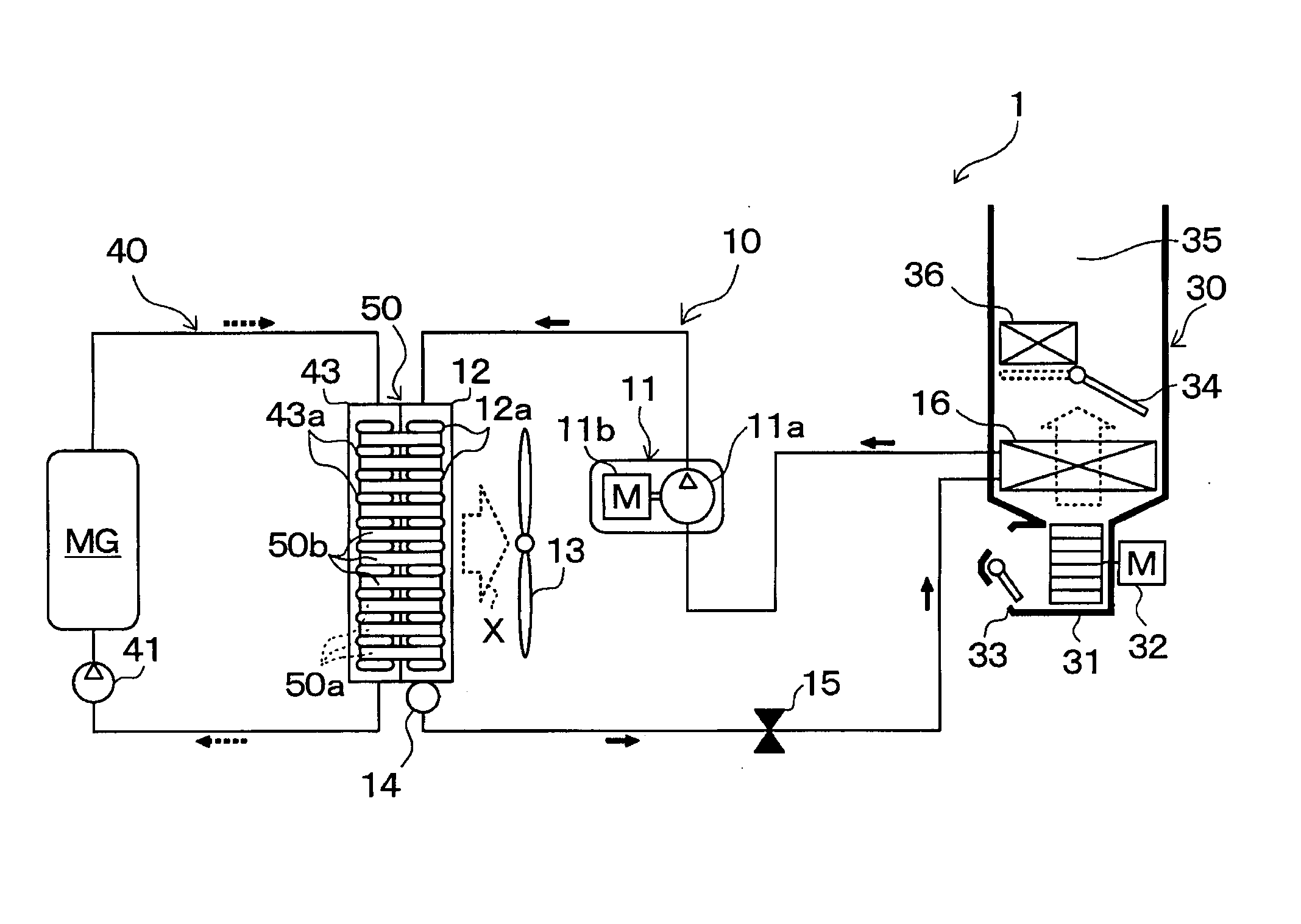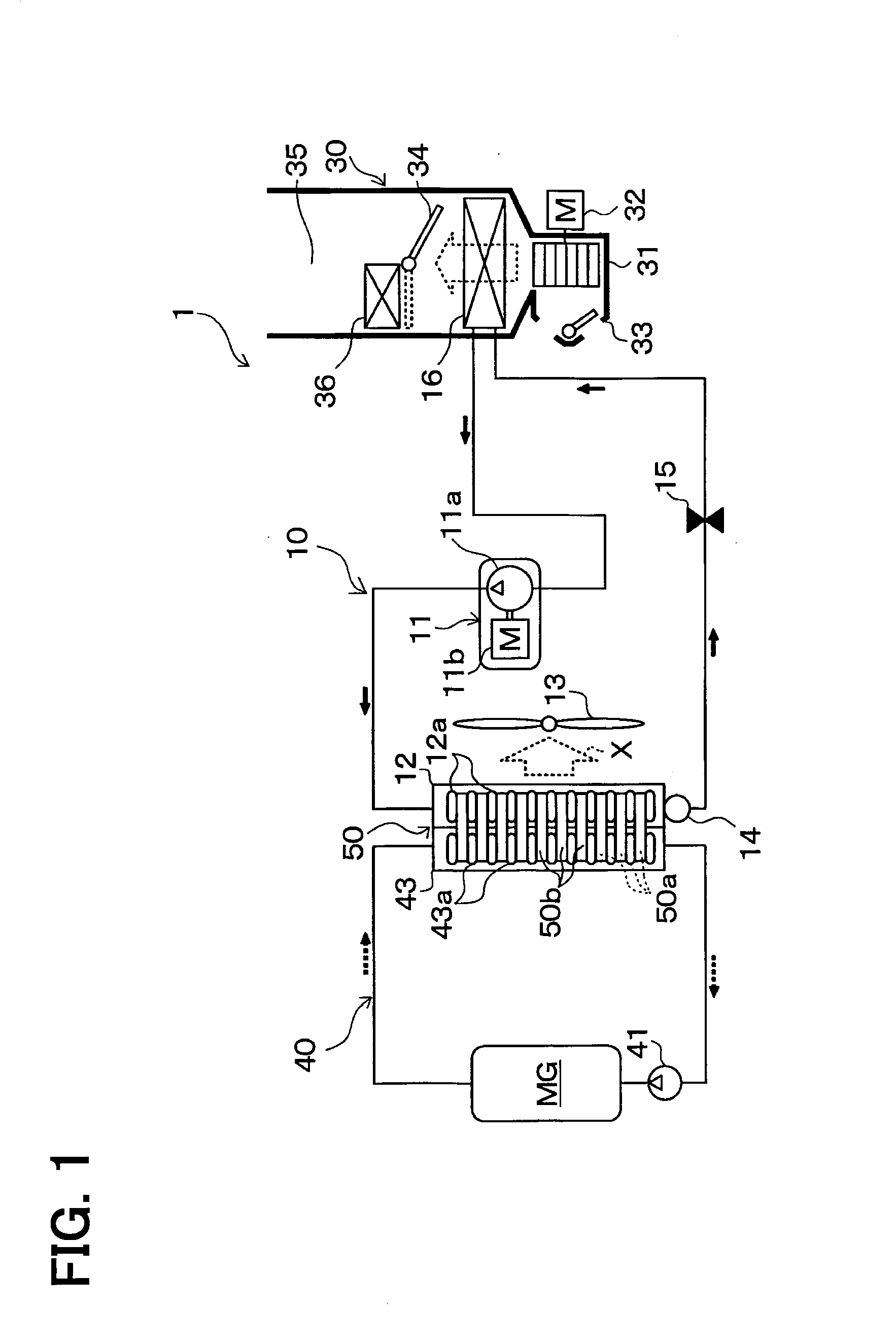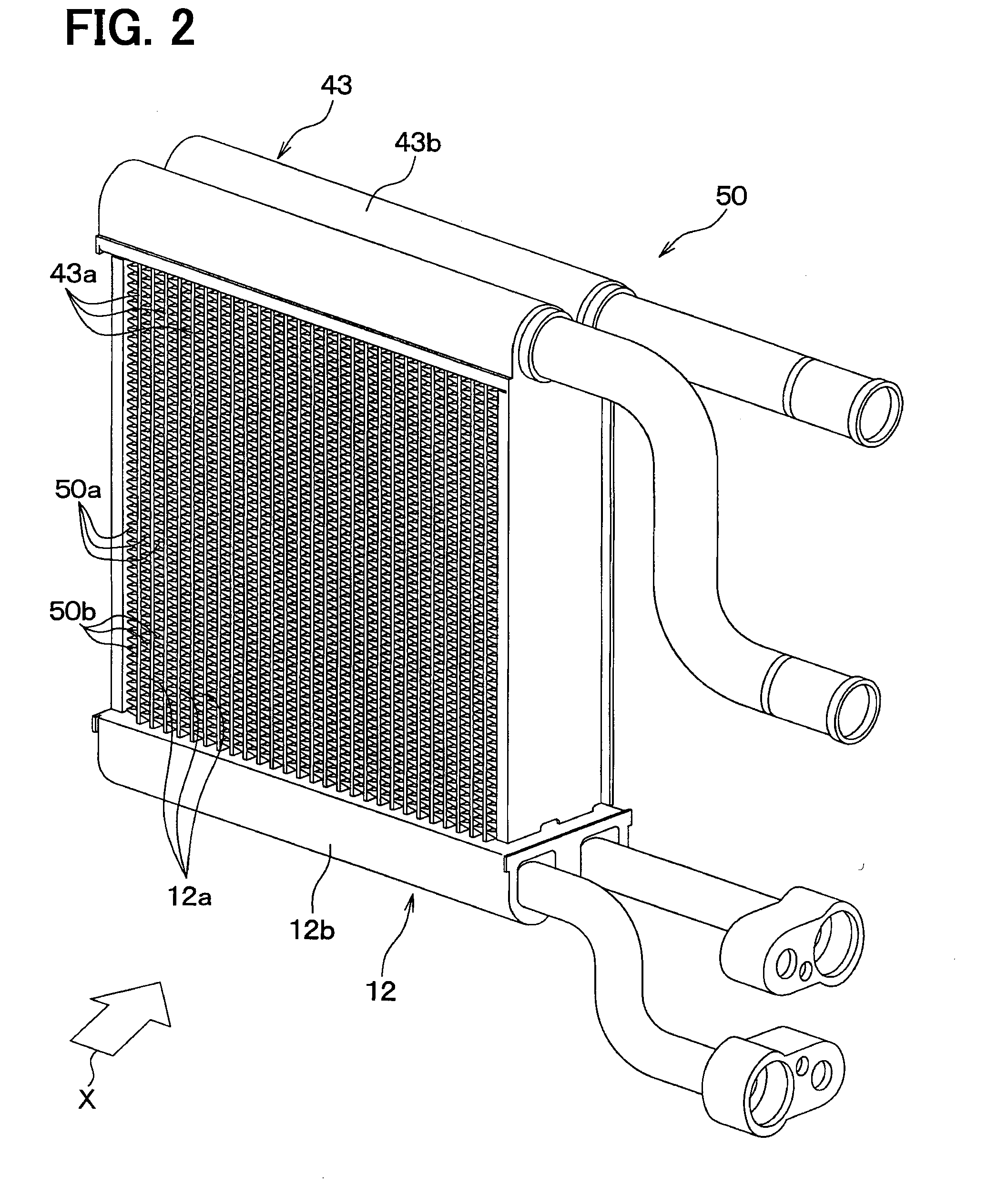Heat exchange system
a heat exchange system and heat exchange technology, applied in the field of heat exchange systems, can solve the problems of unfavorable heat exchange, slow rise in the temperature of the engine coolant in comparison to a normal vehicle, and inability to heat the blowing air of the heater core, so as to reduce the discharge capacity of the compressor, reduce the heat load of the heat pump cycle, and reduce the heat load of the evaporator.
- Summary
- Abstract
- Description
- Claims
- Application Information
AI Technical Summary
Benefits of technology
Problems solved by technology
Method used
Image
Examples
first embodiment
[0115]With reference to FIG. 1 to FIG. 8(b), the first embodiment of the present disclosure will be described. In the present embodiment, a heat exchange system of the present disclosure is implemented to realize a vehicular air conditioner 1 used in a hybrid vehicle which derives a driving power for the travel of the vehicle from an internal combustion engine (i.e., an engine) and from an electric motor MG. FIG. 1 is a schematic diagram of a total configuration of the vehicular air conditioner 1 of the present embodiment.
[0116]The hybrid vehicle can perform switching between two traveling states, i.e., one traveling state in which the vehicle travels obtaining the driving force from both of the engine and the electric motor MG for traveling by operating or stopping the engine according to a traveling load on the vehicle or the like and the other traveling state in which the vehicle travels obtaining the driving force only from the electric motor MG for traveling by stopping the eng...
second embodiment
[0211]In the present embodiment, as shown in FIG. 9, a configuration of the coolant circulation circuit 40 is changed from the first embodiment. More practically, the coolant circulation circuit 40 has, in addition to the coolant pump 41 and the radiator 43, an electric-type three-way valve 42 and a bypass passage 44 that bypasses a flow of the coolant around the radiator 43. Further, in FIG. 9, like parts have like numbers as the first embodiment. Such numbering also applies to the other drawings.
[0212]The three-way valve 42 switches two circuits, that is, a heat medium circuit that connects an inlet side of the coolant pump 41 and an outlet side of the radiator 43 to introduce the coolant flowing into the radiator 43 and let detour around the radiator 43, and a heat medium circuit that connects an inlet side of the coolant pump 41 and an outlet side of the bypass passage 44 to bypass the coolant around the radiator 43. Further, the operation of the three-way valve 42 is controlled...
third embodiment
[0219]In the present embodiment, as shown in FIG. 10, a configuration of the heat pump cycle 10 is changed from the second embodiment. The heat pump cycle 10 of the present embodiment has a switchable refrigerant circuit that is switchable between a heating operation and a cooling operation, i.e., the heating operation for heating a blowing air that is blown into the vehicle compartment (i.e., “heating mode”) and the cooling operation for cooling a blowing air that is blown into the vehicle compartment (i.e., “cooling mode”).
[0220]More practically, a refrigerant inlet side of an interior condenser 37 is connected to a refrigerant discharge port of the compressor 11 in the present embodiment. The interior condenser 37 is a heater (i.e., a heat exchanger for heating), disposed in the casing 31 of an interior air conditioning unit 30 of the vehicular air conditioner 1, for heat exchange between a high-temperature high-pressure refrigerant flowing therein (i.e., in the casing 31) and a ...
PUM
 Login to View More
Login to View More Abstract
Description
Claims
Application Information
 Login to View More
Login to View More - R&D
- Intellectual Property
- Life Sciences
- Materials
- Tech Scout
- Unparalleled Data Quality
- Higher Quality Content
- 60% Fewer Hallucinations
Browse by: Latest US Patents, China's latest patents, Technical Efficacy Thesaurus, Application Domain, Technology Topic, Popular Technical Reports.
© 2025 PatSnap. All rights reserved.Legal|Privacy policy|Modern Slavery Act Transparency Statement|Sitemap|About US| Contact US: help@patsnap.com



